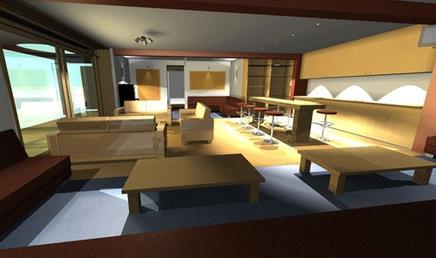An architect argues that 3D modelling can put sustainability at the heart of projects from the start
Ecotect is building performance analysis software designed by architects for use by architects. It is a software created to help make a sustainable approach to building part of the overall design from the outset. The ease with which 3D models can be generated or imported into Ecotect helps architects to gauge the carbon footprint of projects early on and during project development; so that when, for example, a practitioner needs the scheme to pass Part L, chances are the building will be compliant.
Ecotect enables architects to get away from the ”green wash” of last minute design add-ons or twists that try and achieve a optimum performance for a building that has inherent problems with the environmental design concept.

Until a few years ago, we were tackling projects - like most architects - by converting sketches to drawings in 2D drafting software, and occasionally bringing in contract staff to carry out 3D renders for the more prestigious jobs.
Then with Ecotect software we were able to build quick environmental models of buildings to investigate the energy efficiency, day lighting and acoustic properties of our designs at an early stage.
Although this approach worked, we found that we were in effect building three virtual models – one for the 2D drawings and production information, one for the 3D visual models, and one more for environmental modelling. This was time consuming and inefficient to say the least.
Now all 2D and 3D information can be produced from one virtual model, including schedules, surely the bane of every architect’s life!
We have now made the move entirely to Archicad for all building modelling. The advantages to us have been enormous in terms of production efficiency - now all 2D and 3D information can be produced from one virtual model, including schedules, surely the bane of every architect’s life! And one further breakthrough has been the introduction of a translating process which enables Ecotect to interpret the model directly from Archicad, and allow us to quickly build the environmental model from the information already available.
Software is key
The advantages of having one virtual model for a building instead of generating three in as many different software packages are not only in time saved. I believe that levels of sustainability can only be truly analysed using environmental software, and ease of modelling must be the biggest incentive to really understand the key decisions taken at concept design stage, before the building’s format is fixed beyond reasonable change.The features available in Ecotect make it an extremely powerful tool, but what helps give us an edge over other practitioners is the way in which the various graphs, plots, tables, diagrams and other graphic readouts lend authenticity to the case we sometimes need to put together to convince clients or planners of the viability of a particular design approach (see case study 1).
High levels of sustainability are now becoming a prerequisite for many planning authorities when considering applications. We are finding that the information generated from data input into Ecotect is providing us with more than sufficient material to convince planners that we are not ‘adding on’ energy efficiency but really considering it as part of the design process.
Most of our new one off dwelling designs seek to achieve at least level 4 of the Code for Sustainable Homes, which means that low energy heating and cooling must be integral to the design.
Using the Archicad/Ecotect combination we can simply run through a number of different design approaches and test them for appropriateness, and as importantly, see what levels of energy efficiency are feasible, and consequently what Code level is realistic (see case study 2).
Postscript
Alan Gillard is a founder of Gillard Associates and pioneered the use of Ecotect while studying for a master's degree for environmental design at Cardiff University




























No comments yet